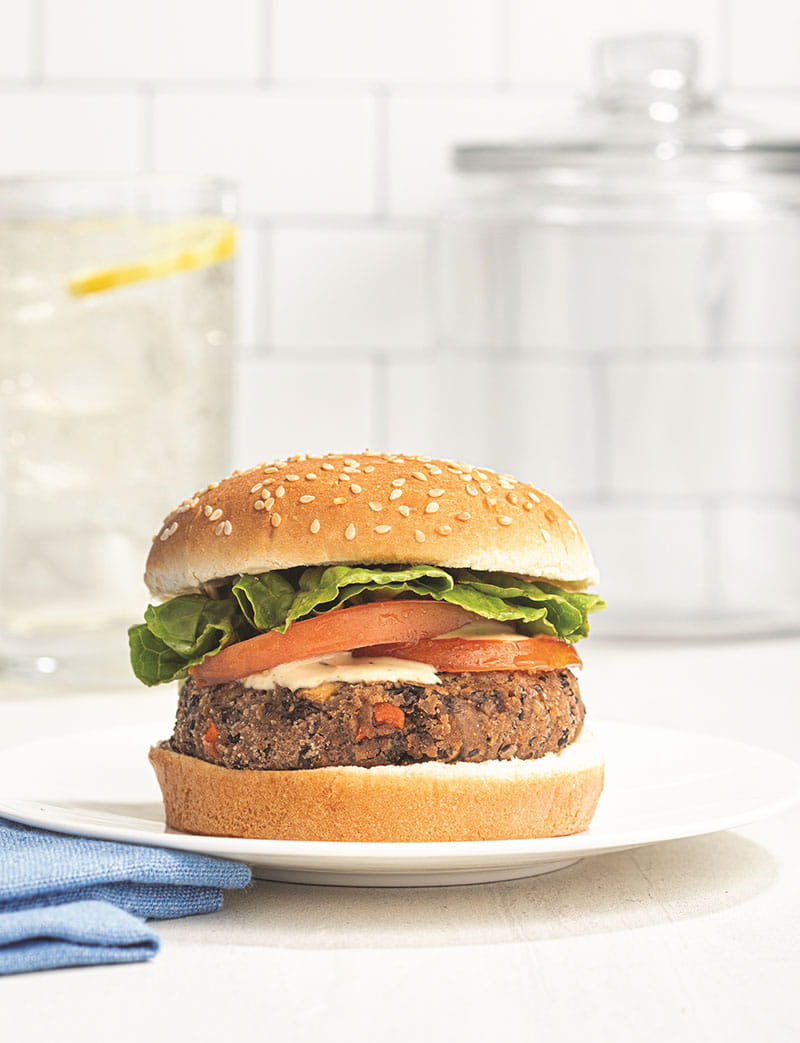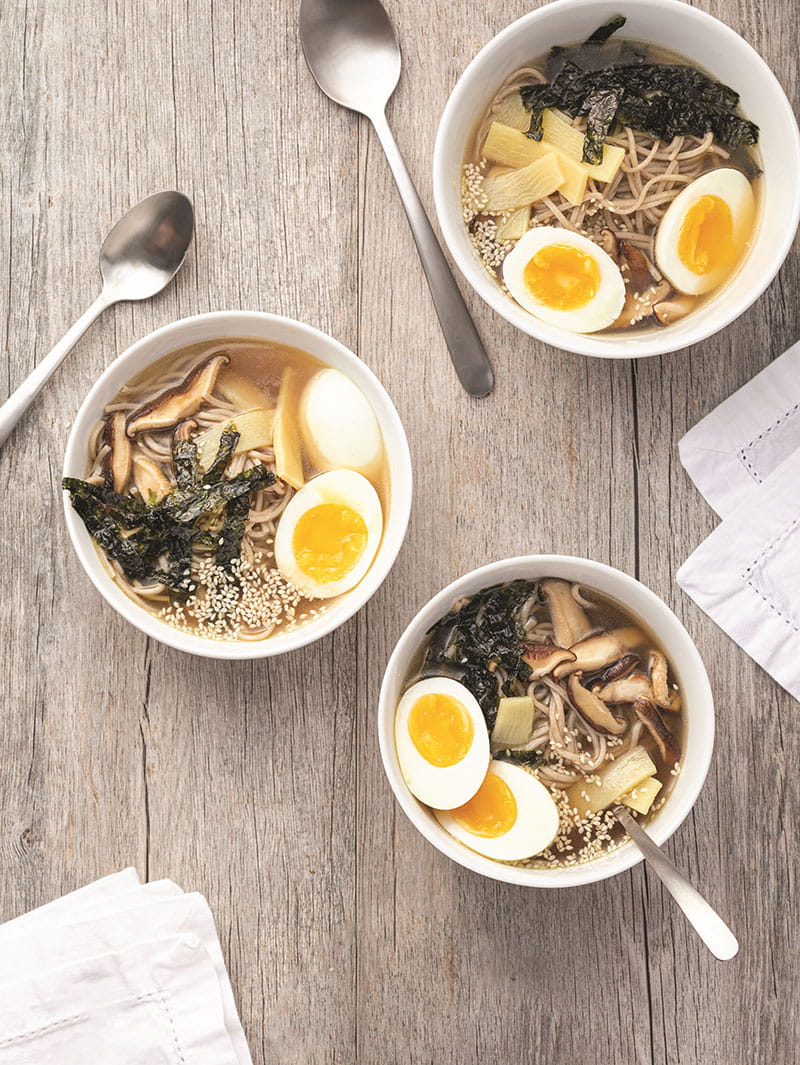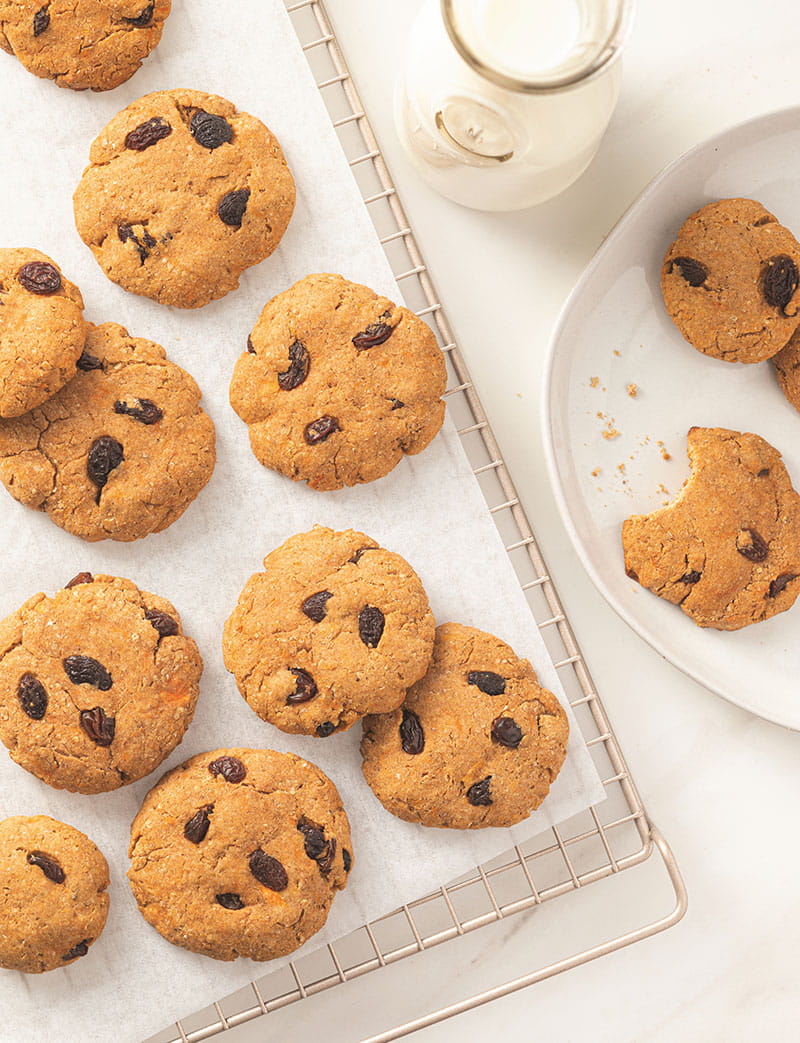For a Healthy Approach to Food, Consider Anti-Inflammatory Eating

- Breakthrough on Gene Therapy for Hereditary Spastic Paraplegia
- How and When Could AI Be Used in Emergency Medicine?
- Drexel Public Health Researchers Lead $3.7 Million Study Looking at Impact of Federal Housing Assistance on Health Care for Chronic Conditions
- Drexel Researchers Gain New Insights from Malaria-Causing Parasite That May Support Development of Future Antimalarial Drugs

Despite the name, the “anti-inflammatory diet” isn’t really a diet, per se, but a way of approaching, cooking and eating food. It encourages eating more foods that are minimally processed and come from plant sources more often than animal sources, which can lead to better health and wellness and a decrease of inflammatory markers and health conditions associated with inflammation.
A new book, “The Anti-Inflammatory Family Cookbook,” explores recipes and opportunities to encourage this kind of eating. It’s co-authored by Jonathan Deutsch, PhD (BS ‘99), professor in the Department of Food and Hospitality Management and director of the Drexel Food Lab in the College of Nursing & Health Professions, and Alexandra Romey (BS '15, MS '18), culinary developer at Saxbys and former Drexel Food Lab manager. Other co-authors represented a mix of culinary and medical experts: Chef Stefania Patinella, an integrative wellness coach; Hilary McClafferty, MD, medical director of pediatric emergency medicine at the Tucson Medical Center in Arizona; and Maria R. Mascarenhas, a pediatric gastroenterologist in the Division of Gastroenterology, Hepatology, and Nutrition at Children’s Hospital of Philadelphia.
“Unlike other diets that are tailored for specific medical conditions, many of us, myself included, can benefit from eating the ‘Anti-Inflammatory Way,’” said Deutsch. “Especially with the decreased physical activity some of us have experienced during COVID-19 restrictions, a diet rich in plants, whole grains, lean proteins and low in convenience and ultra-processed foods can help meet a host of health goals. That said, it can be challenging to cook everything from scratch — our book offers a balance between health-promoting and convenient for families to consider. We worked to translate a rich but dense set of research studies into recipes and practices that are easy for busy families to implement, even incrementally.”
Want to try anti-inflammatory cooking at home? Check out these recipes (as downloadable PDFs) from “The Anti-Inflammatory Cookbook” for black bean burgers, miso soba bowls and sweet potato cookies.
Want to learn more about the anti-inflammatory diet?
Below are excerpts from “The Anti-Inflammatory Family Cookbook” by Stefania Patinella; Alexandra Romey; Hilary McClafferty, MD, FAAP; Jonathan Deutsch, PhD; and Maria Mascarenhas, MBBS. Copyright © 2021 by Stefania Patinella, Alexandra Romey, Hilary McClafferty, Jonathan Deutsch, and Maria Mascarenhas. Photographs by Harper Point Photography. Used with permission of the publisher, Adams Media, an imprint of Simon & Schuster, Inc. All rights reserved.
WHAT IS THE ANTI-INFLAMMATORY WAY?
The anti-inflammatory way is not exactly a “diet”—at least not in the sense that conjures food deprivation. More than a series of food rules, the anti-inflammatory way reflects a lifestyle modeled on traditional cultures where the enjoyment of delicious, whole foods is a foundation of family life. At dinner tables around the world, good taste and good health are not at odds with each other. This is one of the core tenets of the anti-inflammatory way: Nourishment and pleasure go hand in hand.
The term “anti-inflammatory” in relation to diet was adopted by Dr. Andrew Weil in the late 1990s. The approach was modeled after two diets, the Mediterranean diet and the Okinawa or Japanese diet, which are two cultural eating patterns that have been shown in countless studies to be especially health protective. Studies show that in both adults and children, eating a daily diet of anti-inflammatory foods measurably decreases inflammatory markers and many of the conditions associated with inflammation. Consider the following examples:
- In adults, the anti-inflammatory diet has been linked to decreased illness and mortality from numerous chronic diseases, including cardiovascular diseases, diabetes, invasive breast cancer and other cancers, overweight and obesity, gastrointestinal (GI) diseases, fatty liver, depression, and cognitive decline. It is positively associated with better quality of life, good sleep, and healthy lipid profiles, which support heart health.
- In children, the anti-inflammatory diet is associated with less overweight and obesity, improved cardiovascular and respiratory fitness, less asthma, improved academic performance, less sensory processing abnormalities, less ADHD, less fatty liver, less functional GI disorders, better mental health, and better overall quality of life.
In short, eating anti-inflammatory foods is an important way to maintain good health and prevent illness. It can also be used as part of a broad approach to treat chronic diseases linked to inflammation, including many of those previously listed.
WILL MY CHILD EAT ANTI-INFLAMMATORY FOODS?

For many parents, this is the most pressing question. Our simple answer is yes, of course they will! Children learn to eat foods that are part of the families and cultures in which they are raised. Think of hot chili peppers in India, raw fish and seaweed in Japan, and bitter dandelion greens in Italy. These are not easy flavors we were born loving. But as children are repeatedly exposed to these foods, they become favorites. These children even grow into adults who crave these foods and teach their children to embrace them. Training children’s palates to enjoy healthy foods is a well-worn path and absolutely worth the effort. Studies show that establishing positive eating habits in childhood paves the way for a lifetime of good health, especially in combination with the other core components of wellness—physical activity, positive social support, restful sleep, and effective stress management.
BUILDING BLOCKS OF THE ANTI-INFLAMMATORY WAY
The basic components of the anti-inflammatory way are simple and can be summed up in a few broad guidelines:
- The anti-inflammatory way considers the context of how you eat your meals. It isn’t just about what’s on your plate, but also the context in which you eat. Do you enjoy your food? How fast do you eat? Are you enjoying your food mindfully or gulping it down while you watch TV or send texts? Whom do you eat with and what kind of conversations are happening at the table? Can you recognize your own satiety (fullness) cues? Mealtimes are opportunities to introduce a whole mindset about food and nutrition that will stick with your kids throughout their lives. As adults, we have a responsibility to be positive and creative role models. This is not just a wise old adage; the supporting research is strong!
- The anti-inflammatory way is “plant-forward.” This does not mean vegetarian (though the anti-inflammatory way can easily be adapted to a vegetarian diet). It does mean that you will eat more foods from plant sources than animal sources, including a wide variety of vegetables, fruits, legumes, whole grains, nuts, seeds, herbs, and spices. Plant foods are the most concentrated sources of the nutrients our bodies need to keep inflammation low. Animal foods, like fish, eggs, yogurt, cheeses, and some meat are also part of the anti-inflammatory way, but in smaller quantities than in the typical American diet.
- The anti-inflammatory way is based on whole (and preferably organic) foods. This means that foods are minimally processed and as close to their natural state as possible. Whole foods have a full spectrum of nutrients that keep inflammation in check, as opposed to most processed foods, which increase inflammation. In addition, there is increasing evidence that some food additives, such as artificial coloring and flavoring, are harmful, especially to children. Many processed foods are also high in sugar, which is pro-inflammatory. Preferably, the whole foods you choose are also seasonal, local, and organic where possible.
- The anti-inflammatory way incorporates healthy fats from a variety of sources. Like most traditional diets, the anti-inflammatory way is not lowfat. The latest science has shown that good fats are absolutely necessary for healthy growth, especially for children. The key is to pick the right kind of fats. Some fats have been shown to be anti-inflammatory allies, while others cause cell damage and inflammation. In particular, the anti-inflammatory way emphasizes using fats from nuts and seeds like olive oil and sesame oil, as well as oily fish, which have important omega-3 fatty acids.
RESISTANCE IS NORMAL, DON’T DESPAIR!
You are likely to encounter some form of resistance to foods you offer to your children. It may be mild and infrequent, or it may feel constant and fierce. It will change over time, both from one day to the next and over the years. Your child may make faces, push your hand away, close her mouth in resistance, tell you that she will never eat green things, and employ a variety of other exasperating strategies to reject the delicious meal you worked hard to prepare.

There are many reasons for this behavior, including inborn taste preferences, fear of the new, and the normal developmental process of individuation that all children experience.
There are three important takeaways that can help you succeed in expanding your child’s food preferences. First, the mealtime struggles you may face with your child are a normal part of development. They are as common and as predictable as the trial and error that comes with learning to walk and talk. With a few good practices and patience, you can feel assured that they will also be temporary.
Second, because food struggles are a universal part of child-rearing, parents do not need to reinvent the wheel in coming up with strategies to overcome them. Many cultures have made an art out of instilling healthy eating habits in children, and grandmas all over the world have a great deal of wisdom to share in this arena. Many of these practices are also backed by significant scientific research. The bottom line is children have a very flexible palate. They learn to eat the foods of their families across every culture and cuisine, and your child, too, can learn to love a varied diet full of delicious, healthy foods.
Third, teaching children to eat healthfully entails work and patience and is well worth the effort. Childhood presents a unique window of opportunity for developing food preferences and eating behaviors. “Picky eating” is a term that sounds innocent enough, but it can severely restrict diet at a time when children need a wide variety of nutrients to support growing bodies and brains. It may have negative health outcomes, such as low iron and constipation, and lead to increased stress, anxiety, and family conflict. The time and energy you invest early on will set the foundation for your child’s good health well into adolescence and even adulthood.
Making Mealtime Happy and Healthy
There is a lot of attention in the media on what we eat, and less on how. But the context of eating is a key part of the anti-inflammatory way. Positive food environments not only make it easy to choose healthy foods; they also help to combat the stress of everyday life, which is itself a major cause of inflammation.
TIPS FOR MAKING MEALTIMES HAPPY AND HEALTHY
- Cultivate a mealtime environment that is social, relaxed, and screen-free. Put away the phones and tablets, turn off the TV, and talk to one another.
- Encourage everyone in the family to eat slowly, mindfully, and tap into their own satiation cues. It’s okay to stop eating when you feel full.
- Encourage descriptive language. Something being yummy or gross is not enough—what is it about the food that you like or find unappealing?
- Use smart food choice architecture to make the healthy choice easy to find and desirable in your home.
- Avoid negativity and pressure/cajoling. Food is neither a reward nor a punishment.
- Limit snacking in between meals so children are hungry for main meals, which tend to be more nutritious.
- Include children in hands-on cooking. They are much more adventurous eaters when they are involved in making meals!
TIPS FOR GETTING STARTED
- Don’t sweat the small stuff. Imperfect knife cuts and substituted ingredients are welcomed—and encouraged. That’s how you come up with something new and uniquely yours.
- Don’t automatically pass on a recipe because it has an allergen you are avoiding. Chances are good that it’s easy to take out—read recipe headnotes for guidance.
- Plan ahead so one meal’s prep supports the next. Chop and cook more than you need; then use prepared ingredients and leftovers to save time.
- Invite kids to cook with you frequently. Teach them safety rules and demonstrate what to do. Then let go and trust them to learn.
In This Article
Drexel News is produced by
University Marketing and Communications.
